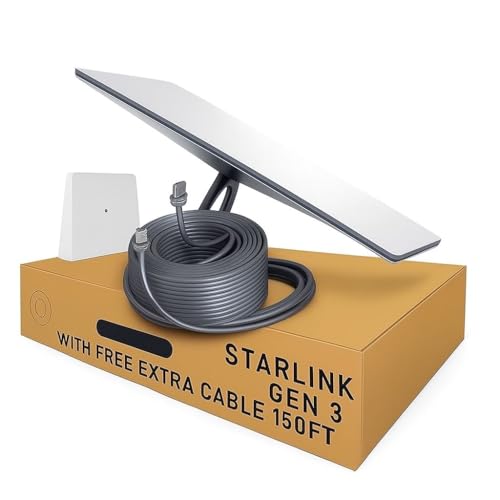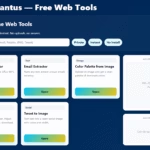I open with a sharp briefing that frames the most actionable stories and why they matter to your roadmap right now. I prioritize items for the day by business impact, operational urgency, and clear effects on cost, risk, or revenue.
I group items into what needs immediate decisions versus what should enter longer-term planning. This helps teams triage work without adding noise to ops cycles.
I cross-reference trusted feeds and official statements before flagging a claim. That way, this briefing stays signal, not chatter, and leaders get verified context from san francisco field reports and founder moves.
I call out which stories come with an embedded video explainer or a demo so teams can align fast without extra decks. I also outline when to escalate the same day versus folding an item into weekly reviews.
Key Takeaways
- Actionable triage separates urgent decisions from watchlist items.
- Validated sources reduce false alarms and wasted effort.
- San francisco reporting adds on‑the-ground context.
- Embedded video can speed internal alignment.
- Escalate only when impact on cost, risk, or revenue is clear.
What I’m Tracking Right Now: Today’s Top IT Stories at a Glance
I pull together high-impact headlines to help leaders triage work at the start of the day. My aim is to surface what needs an immediate decision, what merits a light hold, and what can wait for weekly planning.
I summarize top stories that move markets, shift product timelines, or change vendor priorities. I mark items likely to develop so teams avoid over-committing resources early.
I rely on AP mobile alerts and official filings to cross-check claims from briefings and social posts. That verification helps separate incidents that need an incident response from those that require stakeholder messaging only.
- I flag pre-market or after-hours disclosures that could affect procurement or staffing.
- I spotlight one or two tech inflection points that may ripple through strategy.
“Fast, verified context lets teams act with confidence rather than react to noise.”
The Latest IT News You Can’t Miss Today
I translate raw headlines into short, actionable guidance for teams.
Why these items matter for business decisions
I break down headlines into concrete choices that affect budgets, SLAs, and timelines. I show the way each item shifts procurement or deployment windows. This helps leaders decide whether to pause, proceed, or pivot in a single meeting.
How I validate sources fast before sharing
- I check AP for initial confirmation, then pull primary documents like filings and status pages.
- I compare vendor advisories and timestamps to spot edits or conflicting reports.
- I flag which stories are momentum-builders versus one-off alerts so teams avoid overreaction.
| Action | Data to pull | Executive note |
| Pause deployment | cloud region status, version diffs | One-line risk and 30s cost impact |
| Proceed with caution | compliance logs, release notes | Mitigation steps and SLA effects |
| Escalate | vendor timestamp, incident tier | Chain-of-command and customer comms |
“Fast, validated context lets teams act with confidence rather than react to noise.”
Inside the Data Center Boom: Energy, Economics, and AI’s growing power draw

I take a close look at how rising compute demand reshapes power plans and campus designs.
Uncanny Valley lays out why modern facilities differ from legacy colos. AI clusters change floor layouts, rack density, and electrical distribution. This shifts procurement timelines and capital plans.
Key takeaways from Uncanny Valley on how facilities operate
AI training loads create spiky, high-density demand that stresses grids this year. Utilities now show longer interconnect queues and longer lead times for substations and transformers.
Cooling, siting, and sustainability trade-offs I’m watching
Air, liquid, and direct-to-chip cooling push siting toward favorable climates and water access. That changes regional investment patterns and forces new PPA and carbon accounting choices.
| Risk | Decision | Mitigation |
| Grid delay | Reserve capacity or diversify colo | Multi-site contracts, staged builds |
| Cooling supply | Choose onsite liquid or colder region | Vendor guarantees, supply chain windows |
| Stranded assets | Phase GPU rollouts | Flexible power contracts, equipment resale |
“Plan for spikes, not averages; that helps avoid stranded assets next year.”
- Ask vendors about electrical distribution, PUE targets, and cooling lead times.
- Reserve capacity, diversify colocation, and map supply-chain timing for GPUs.
Outages and Resilience: Power, cloud, and internet reliability this week
My review this week maps outage patterns across cloud, ISP, and SaaS layers. I found clusters by region and by shared upstream services rather than isolated vendor faults. That pattern matters when deciding whether to fail over or wait for provider recovery.
Patterns in this week’s outage reports across major providers
I saw regional spikes tied to a single backbone provider and separate SaaS degradation linked to an auth dependency. In one case, a local power event upstream triggered router flaps that cascaded into cloud accessibility issues.
My checklist to assess incident impact on apps and customers
- Blast radius: list affected regions and services.
- Affected endpoints: user-facing APIs, admin panels, and replication links.
- Customer impact: visible errors, delayed jobs, or data loss risk.
- Regulatory exposure: PII, SLAs, and compliance windows.
- Workarounds: degraded mode, read-only, or temporary redirects.
Quick verifications I run in minutes: DNS resolution, simple synthetic transactions, dependency toggles, and provider status checks. Align status messages to support SLAs and log timeline, root cause, and retry outcomes for a solid post-incident review later in the week.
“Separate one-off glitches from systemic signals by watching advisory patterns across providers.”
| Check | What to run | Decision guide |
| DNS | Resolve from multiple regions | Fail over if resolution fails globally |
| Synthetic | Ping endpoints, auth flow | Measure customer-visible SLA hit |
| Provider advisory | Status page, vendor post | Flag systemic vs. isolated |
Enterprise Moves: The companies reshaping IT right now
I track which corporate moves are reshaping procurement and roadmap timing across enterprise stacks. I flag deals that change negotiation leverage, and I note when a partnership implies real integration instead of marketing alignment.
M&A, funding, and partnerships to watch
Watch for consolidation in crowded segments: it often shortens support lifecycles and forces SKU rationalization.
- I call out acquisitions that fold functionality into a single vendor and raise switching costs.
- I highlight financings that accelerate product roadmaps and change vendor pitch power this year.
- I parse partnership language to tell if APIs, SSO, or joint SLAs are promised—or if it is branding only.
Data, security, and AI product updates with real-world impact
I track measurable outcomes such as cost-per-inference drops, faster MTTD, and tighter data residency controls.
Those metrics tell me whether a company is delivering real value or just packaging features. That reading helps teams decide timing for pilots and procurement asks.
“Ask for roadmap dates, migration incentives, and integration proofs before committing to long-term licenses.”
| Signal | What to verify | Buyer question |
| Acquisition | Product overlap, support plan | How will SKUs consolidate and who owns roadmap? |
| Partnership | API docs, joint demos | Is there an end-to-end integration test and SLA? |
| Funding round | Use of proceeds, hiring plan | Will investment speed delivery or change pricing model? |
Work Transformed: From pandemic shifts to an AI‑first future

I track how pandemic-era changes fused with AI advances to reshape everyday work rhythms.
Microsoft’s WorkLab insights with Colette Stallbaumer
WorkLab argues that five years of upheaval form one continuous transformation in how business operates, not two isolated eras. Stallbaumer frames pandemic pivots and AI adoption as linked waves that changed expectations about flexibility, speed, and role design.
How five years changed workflows—and what changes next
I unpack her thesis and show how AI copilots and automation altered meetings, documentation, and handoffs. Repetitive tasks now route to agents, freeing humans for judgment work.
Practical steps I see leaders taking this quarter
- Role redesign: shift tasks from job descriptions into outcome-based goals.
- Prompt standards: adopt templates so copilots return consistent outputs.
- KPI updates: measure AI-assisted output, not just hours.
- Governance: set guardrails for responsible use and drift monitoring.
“Pilot a single process in a day: measure before-and-after metrics, train a small cohort, then scale.”
Consumer Tech Pulse: Browser and app changes affecting your day
My focus is on browser-level shifts that alter extension APIs and break ad measurement paths.
Privacy, extensions, and performance in modern browsers
Privacy updates tighten tracking and can reduce analytics fidelity overnight. I recommend auditing tag managers and first-party measurement to avoid blind spots.
Extension capabilities are shrinking in some channels. If your features rely on injected scripts, plan migration to sanctioned extension APIs or server-side renders.
App policy shifts that will alter user acquisition
Store policy edits often change attribution windows and review guidelines. That can raise acquisition costs and force new A/B testing cadences.
Practical steps: adapt consent flows, trim heavy third‑party scripts, and set tighter performance budgets so critical content loads fast and compliant.
“Run cross-channel QA on key flows and communicate permission prompts clearly to minimize churn.”
- Verify core flows across major browser channels and app build variants.
- Instrument fallbacks for broken content injection patterns.
- Use short in-app snippets to explain permission prompts and reduce friction.
Security Briefing: War, cyber operations, and the broader internet
I track how wartime dynamics translate into phishing lures, supply-chain probes, and routing anomalies.
Verified reporting from established outlets like the Associated Press guides my situational awareness so teams act on facts, not rumors.
How geopolitical conflict is shaping threat activity
- Attackers shift to opportunistic phishing tied to breaking events. Expect credential theft campaigns that leverage rapid public interest.
- Supply-chain probes aim for wide lateral access by targeting popular open-source components and CI pipelines.
- Routing anomalies and DDoS waves often coincide with conflict spikes and can be used to hide deeper intrusions or to force failovers.
Data protection moves I recommend today
Short, immediate steps reduce risk while teams investigate.
- Tighten token lifetimes and revoke unnecessary long-lived credentials.
- Enforce step-up authentication for sensitive actions and admin consoles.
- Verify offsite backups with restore drills and log integrity checks.
- Collect telemetry: BGP changes, volumetric traffic, auth failure spikes, and unusual service-to-service flows.
| Priority | Action | Why it matters |
| High | Revoke stale keys; enforce step-up MFA | Limits blast radius from credential theft |
| Medium | Run restore drills for offsite backups | Proves recoverability during an outage |
| Low | Increase routing and DDoS telemetry retention | Helps separate noise from a deliberate attack |
“Focus on short, verifiable controls that lower risk without causing operational paralysis.”
I prepare a two-sentence executive summary for leadership: current war-driven activity raises phishing and supply-chain risk; I recommend immediate token, MFA, and backup verification steps to reduce exposure while we monitor routing and outage signals.
Media, Content, and AI: The new rules of engagement
I map how licensing clauses and training-data deals reshape creator pay and distribution choices. That shift matters this year for strategy and budget because rights often determine who can reuse output and how revenue is shared.
Licensing, training data, and creator economics
I watch contract language closely: nonexclusive vs. exclusive, training rights, and royalty splits change quick monetization paths.
Audit your inputs: list sources, confirm permissions, and log provenance before any model training. That lowers legal and reputational risk.
Keep disclosure text clear. Offer creators short, plain-language summaries of how their work may appear in models or ads.
Content authenticity signals: what’s working
Watermarks, cryptographic signing, and provenance metadata are gaining traction as trust markers.
Browsers and platforms are testing ways to surface these signals to users and ad systems. That affects autoplay, tracking consent, and how video is prioritized in feeds.
“Prioritize provenance and clear rights documentation to protect creators and preserve reach.”
- Audit checklist: training inputs, license copies, consent logs.
- Test plan: run small A/B pilots for formats, measure view rates, ad lift, and creator revenue share.
- Brand safety: flag war-related misinformation early; prefer verified sources for sensitive campaigns.
On the Ground in San Francisco: Startup stories shaping the year
I spent a week meeting founders in san francisco to hear how infrastructure prototypes became paying customers.
AI infrastructure founders and the path to revenue
I saw a few clear patterns that separate pilots from commercial deals. First, companies that pair hardware with a small services layer close faster.
Founder strategy often blends credits and short colocation commitments. That reduces upfront capital while keeping performance predictable.
Go-to-market differs from apps: pilots focus on a narrow proof-of-value, usage-based pricing, and a reference architecture playbook. That approach shortens procurement cycles.
- Signals for enterprise trials: mature observability, documented security posture, trained support staff.
- Red flags: ad-hoc runbooks, missing audit logs, or unclear escalation paths.
“Startups that sold early paired infra with a white-glove onboarding plan and clear charge models.”
Before piloting, ask focused procurement questions: expected cost per inference, GPU commitments, fallback SLAs, and who owns telemetry during support windows.
| Area | What to verify | Why it matters |
| Pricing | Usage caps, overage rates, credits | Prevents surprise bills during scale-up |
| Security | Compliance evidence, pen-test reports | Determines enterprise acceptance speed |
| Support | Response SLAs, escalation chain | Keeps pilots on schedule and reduces risk |
Seattle’s Creative-Tech Convergence: A unicorn-like scene worth watching
I profile why Seattle’s creative ecosystem matters for product design and brand impact. Local artists work closely with engineers to craft clearer onboarding, richer tutorials, and memorable campaigns.
Why a talented artist ecosystem matters for product and brand
Creative pipelines—motion, sound, interactive—feed marketing ops and in-product education loops. That reduces friction during adoption and raises perceived quality across years of a product lifecycle.
I point to companies with deep Seattle roots—Microsoft, Amazon, Valve—that blend design and engineering to ship cohesive experiences. Co-created sprints with creatives speed iteration and improve trust for complex AI features.
How teams can tap this convergence:
- Targeted recruiting for hybrid designer-engineer roles.
- Short creative sprints that produce ship-ready assets.
- Metrics that reward clarity: onboarding completion and retention, not feature count.
“Regionally dense talent makes cross-discipline hiring simpler and products ship faster.”
| Benefit | How to tap | Success metric |
| Better storytelling | Embed creatives in roadmap sprints | Higher NPS and demo conversion |
| Faster onboarding | Co-design tutorials with product | Time-to-first-value down |
| Stronger brand | Run joint marketing + product pilots | Retention over multiple years |
Numbers That Matter Today: Data points to guide decisions

Raw metrics often hide decision value; I pick the ones that map to actions this week.
Key metrics from companies and markets I’m watching
I track uptime deltas, release adoption rates, GPU lead times, and unit economics.
Uptime deltas show whether to fail over or keep running. If a region drops beyond agreed SLA, I advise invoking failover clauses or pausing new rollouts.
Release adoption reveals real-world stability. Slow adoption suggests a staged canary deploy; fast adoption with errors signals an immediate rollback.
| Metric | Decision this week | Why it matters |
| GPU lead times | Renegotiate procurement or stagger orders | Long lead times risk delayed capacity |
| Unit economics | Adjust pricing or pilot scope | Keeps margin targets predictable |
| Uptime delta | Trigger SLA claims or failovers | Limits customer impact |
- I mark noisy indicators—short-lived traffic spikes—as non-actionable unless they repeat.
- Leading signals—sustained adoption change or supply-chain shifts—require strategy shifts that week.
- Baseline internal telemetry against public benchmarks to spot where a company is ahead or behind peers.
“Keep dashboards small: three executive views that show trend, risk, and action cuts analysis time.”
Company Spotlights: Who’s setting the pace this week
I spotlight a handful of companies whose product moves and partnerships are changing procurement windows this year.
What I look for: product momentum, customer wins, and partnership depth. I call out founder choices that sped learning cycles—open roadmaps, clear postmortems, and customer-led design.
Outage response matters. Firms that perform well during incidents often earn longer contracts and higher trust. I note practical practices you can copy: fast incident playbooks, transparent timelines, and public remediation notes.
- Where media coverage aligns with reality, I flag it as validated traction.
- Where it diverges, I recommend hands-on testing or customer references before committing.
- Bring these questions to vendor meetings: expected integration time, fallback behavior during an outage, and proof of customer success.
“Strong post-incident communication and clear integration plans shorten procurement cycles and cut operational risk.”
Global Lens: How the IT world connects across regions
I map regional policy shifts to practical rollout steps so teams avoid last-minute compliance gaps.
Regulatory moves and standards shaping deployment
I start with data residency and AI transparency rules. Map where data must stay local, what logs you must keep, and what model disclosures are required.
War and geopolitical tension speed some policy timelines and slow supply chains. Expect export controls, delayed parts, and shifting standards that affect procurement.
Media ecosystems and platform rules differ by region. That changes moderation, ad rules, and distribution assumptions for any product launch.
- Contracts & SLAs: add regional clauses for privacy, uptime variance, and legal remedies tied to local courts.
- Routing & internet resilience: plan multi-path peering and failover zones to reduce single-country risk.
- Governance cadence: set quarterly reviews for policy drift and fast-track updates that keep velocity steady.
“Translate hub-level innovation—like san francisco pilots—into compliant, repeatable playbooks for global rollout.”
Day by Day: Today’s developments that move fast
I watch hourly telemetry so teams can act on incidents before they cascade into customer impact.
Check these fast-moving stories before close of business:
- Surprise patches that alter behavior or permissions.
- Emergent outage signals from upstream providers.
- App errors spiking after a recent deploy.
Run quick validations now: app crash analytics, browser compatibility spot checks, and API latency sampling. These three checks surface regressions in minutes and guide whether to pause a rollout.
Copy-paste updates for internal channels:
- “Watching incident: increased error rate in region. Running rollback plan if latency > 200ms for 10m.”
- “Patch applied this morning may affect auth flows—please confirm SSO checks by 1600 PT.”
I flag which items may evolve in hours and what triggers a response. A sustained error rate, an expanding blast radius, or customer-facing timeouts should prompt an incident call and a customer advisory.
Watch these dashboards: error rate by region, API p95 latency, and active feature-flagged sessions. If metrics cross risk lines, follow this rollback checklist:
- Flip feature flag to off for the affected cohort.
- Initiate staged rollback for recent deploys.
- Notify support and exec channels with a one-line status and ETA.
Week to Week and Year Over Year: Trends that stick
I line up recent metrics with historical trends to separate blips from momentum.
I compare what shifted this week against last year’s baselines so teams spot seasonal noise versus durable movement.
Small stories matter when they change cost curves, reliability, or adoption patterns over multiple quarters.
What changed this week—and how it compares to last year
Watch for vendors and standards that show steady uptake across regions and use cases. That signals toolchain choices worth committing to.
Flag stories that started small but now repeat in telemetry or procurement asks. Those are often early indicators of lasting shifts.
- Roadmaps: nudge timelines toward stable vendors when adoption steadily rises.
- Budgets: reallocate spend if cost trends are moving up year over year.
- Hiring: hire for durable capabilities, not for temporary spikes.
Set a lightweight weekly review: two charts, three risks, and one decision item. That keeps momentum without heavy process.
“Pause and re-evaluate when leading indicators diverge from expected trajectories.”
| Focus | Signal | Action |
| Adoption | Repeat pilot wins | Scale pilot to staged production |
| Cost | Rising unit spend | Renegotiate or stagger rollouts |
| Reliability | Recurring incidents | Pause new features; run root-cause |
Conclusion
I summarize priorities so leaders know what to act on now, what to monitor this week, and what can wait.
Act now: run the quick validations that prove or disprove an incident claim, lock down critical keys, and pause risky rollouts. These steps cut immediate exposure and keep customers steady.
Watch this week: follow vendor advisories, supply‑chain timing, and metric trends that may force procurement or failover decisions. A small course correction now saves large costs later.
Across the wider world of tech, focus on validation, prioritization, clear communication, and fast iteration. I flag breaking news that changes SLAs and map its business impact so leaders act with data, not noise.
Send me metrics or decision questions to tailor the next briefing and make this loop more useful for your team and roadmap.
FAQ
What topics do I cover in my daily IT briefing?
I track data center trends, outages, enterprise moves, security developments, consumer apps, media and AI policy, and regional startup activity to give a wide view of what shapes business and product decisions.
How do I pick the top stories for “What I’m Tracking Right Now”?
I prioritize items that affect operations, costs, customer experience, or regulatory risk—outages, major funding or M&A, energy constraints for compute, and policy shifts that change how products reach users.
How do I validate sources quickly before sharing a headline?
I cross-check primary filings, provider incident pages, official statements from companies like Microsoft or Google, and two independent reputable outlets, then look for direct artifacts (logs, outage maps, regulatory notices).
Why do headlines about data centers and AI power use matter to businesses?
Compute costs and grid constraints influence capacity planning, regional siting, and sustainability budgets. These factors directly affect forecasted spend and time to market for AI initiatives.
What signs indicate an outage will have broad customer impact?
Widespread error rates across regions, multiple dependent services failing, and prolonged event timelines on provider status pages signal high customer impact and potential revenue loss.
How do I assess the incident impact on my applications?
I use a short checklist: map dependencies to provider services, estimate affected user percentage, evaluate data loss risk, and calculate mitigation time based on failover plans and SLAs.
Which company moves should readers watch for immediate business impact?
Major cloud pricing, platform interoperability deals, security acquisitions, and launches of AI models or tooling that change competitive dynamics can quickly alter vendor strategies and budgets.
What practical steps should leaders take this quarter for an AI-first future?
I recommend validating use cases, budgeting for compute and energy, tightening data governance, and piloting models with clear metrics tied to revenue or cost savings.
How do browser and app changes affect everyday product teams?
Policy or performance changes can alter user acquisition, ad revenue, and extension compatibility. Teams must test releases, update compliance, and monitor metrics after major browser updates.
How does geopolitical conflict shape cyber threat activity?
Conflicts often drive state-sponsored operations, increased hacktivism, and targeted supply-chain attacks. I advise heightened monitoring, patching critical systems, and reviewing cross-border data controls.
What are the key legal and ethical issues around AI training data and content licensing?
Licensing clarity, creator compensation, and provenance of training data are central. I focus on transparency, opt-out mechanisms, and contracts that limit exposure to takedown or copyright risk.
Which metrics should I watch daily to guide IT decisions?
Monitor latency and error rates, compute utilization, energy consumption forecasts, MTTD/MTTR for incidents, and customer-facing KPIs like retention and conversion tied to platform health.
Why follow regional scenes like San Francisco and Seattle for startup signals?
These hubs reveal shifts in talent, funding focus, and product innovation. Observing founder moves and funding rounds helps anticipate where infrastructure and tooling demand will grow.
How do regulatory moves across regions affect deployment plans?
New data residency, AI transparency, or cybersecurity standards can force architecture changes, localization of services, or added compliance costs—so I track rulemaking and enforcement patterns close
- My Guide to Understanding Data Centre Architecture: Core Components Every IT Pro Should Know
- Wazuh Home Network Setup: A Step-by-Step Guide
- Quantum Computers Decrypting Blockchain: The Risks and Implications
- Wazuh: Enterprise-Grade Security for Your Business
- Wazuh for Beginners: A Comprehensive Guide













